

If you are planning a trip to Iceland at any time in the future, this episode of the All Things Iceland podcast will arm you with useful facts and tips that will make your preparation much smoother.
Prepare for Icelandic Weather
I’m going to start off with one of the most important things to keep in mind when you travel to Iceland – the weather! Regardless of the season, the weather in Iceland can vary wildly. In one minute, it can be raining and windy and in the next, the sun can be shining and it is a lot less windy. We’ve even had snow and hail during the summer. While snow and hail are rare in the summer, it is best to know that rain and strong winds are likely to show up during your trip. Vedur.is is the weather website that most Icelandic people look at when they want to know what to expect weather wise.
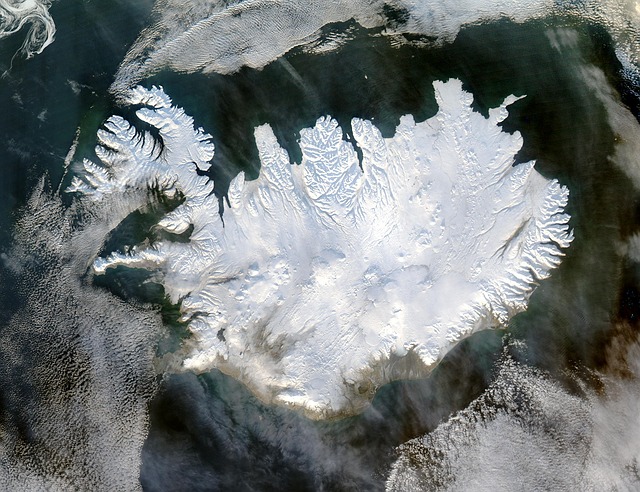
What to pack for Summer & Winter in Iceland
Regardless of the season in Iceland, you will need to pack layers. The average temperature in Reykjavík during winter is freezing (32 degrees F or 0 degrees celsius), but it can be much colder in other parts of the country, especially north. During the summer, the temperature can range from 10 – 13 degrees Celsius or 50 – 55 degrees Fahrenheit. Check out my podcast episodes about summer and winter for more information. As I mentioned in the weather portion of this episode, one thing that is best to be prepared for is the varying weather conditions.
The list I am about to share is in no way all you should pack. These are items I feel that you should for sure pack. Clothes like underwear and toiletries are not mentioned because I assume you will have some. If you don’t, no judgement on my end.
For summer, definitely pack the following:
- waterproof or water resistant jacket or coat with a hood- Goretex is your friend
- waterproof or water resistant pants
- Sweater – preferably a breathable material made from synthetic or natural fibers, like wool. If you are hiking, don’t wear cotton. It holds onto the moisture from your body and can make you feel wet and cold. No jeans while hiking either, but you can wear them around town or if you will mostly be in the car
- A light shirt for underneath your sweater. If it gets quite warm, relatively warm for Iceland, it will be nice to have this layer
- Sun protection in the form of a hat, sunscreen and sunglasses. The sun is very strong here and you can get burned or tan quickly.
- Hiking boots with good grip, Vibram soles do the trick – this is especially needed for hiking, walking on uneven ground (which is everywhere outside of the city) and for ensuring that you won’t slip on wet surfaces. You can, of course, bring regular shoes or sneakers to wear in the city, but if you want to explore outside of urban areas, hiking boots is a must. Ones that go over the ankle are especially good for glacier walks and supporting your ankles on uneven or sloped terrain.
- A swimsuit
- Gloves
- A buff, which can be used as a scarf, hat or to pull your hair back
- Reusable water bottle. Icelandic water is delicious and you can drink it right out of the tap or from fresh water streams. You do not have to buy bottled water here, so reduce your use of plastic and save yourself some money by bringing a reusable bottle
- Your camera – smartphones work just fine. The landscapes are gorgeous here.
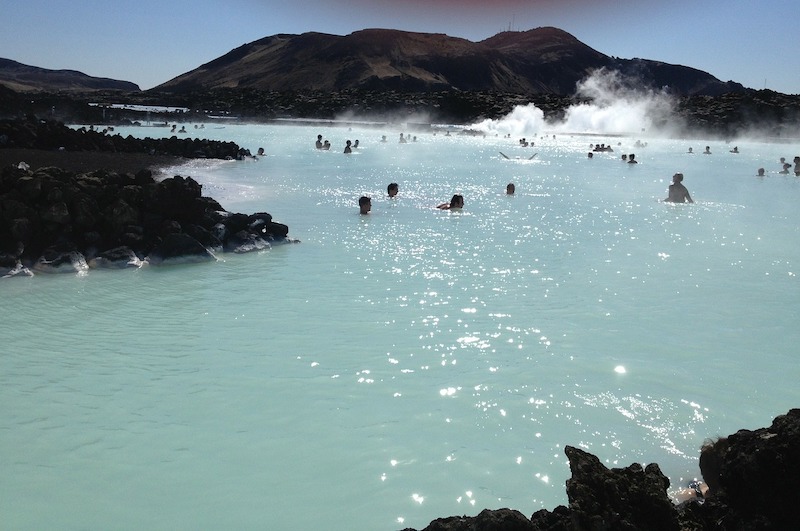
For winter, definitely pack the following:
- A warm winter coat with a good water resistant layer
- Sweater – preferably a breathable material made from synthetic or natural fibers, like wool. Similar to hiking, if you are going on a glacier, don’t wear cotton, including jeans. It holds onto the moisture from your body and can make you feel wet and cold.
- A warm hat, scarf and gloves (you can include warmers to put in your gloves if your hands get very cold)
- Winter boots with good grip in the sole
- Warm socks
- Long johns or long underwear
- Microspikes are optional but many paths in the city and out of town have a layer of ice on them
- Sunglasses – when the sun is out, it can be bright, so protect your eyes
- A swimsuit
- Reusable water bottle – maybe one that can hold hot or cold liquids
- Your camera
Do not pack the following in any season
- An umbrella – the wind can get very strong and it can easily break umbrellas.
Iceland’s International Airport Location & Getting into Reykjavík
The international airport is in Keflavík, which is about 45 minutes from downtown Reykjavík by car. Most people assume that the airport is closer, but unfortunately it is not. It is helpful to plan your transportation ahead of time. Taxis are ridiculously expensive. It could cost you $200 one way if you took a taxi into town. Uber does not exist here and the ride sharing culture hasn’t expanded enough yet in the country for you to rely on it. Hopefully, that changes in the future. Also, there are no trains in Iceland, but I have heard plans of building one in the future.
The most popular option that is decently priced is taking the FlyBus from the airport. On their website you can choose where you want to be dropped off, and you can book your ticket in advance. In the summer, the bus runs every 30 minutes from the airport and probably around every hour in the winter. They have WiFi on the bus, the seats are comfy and you don’t have to worry about driving.
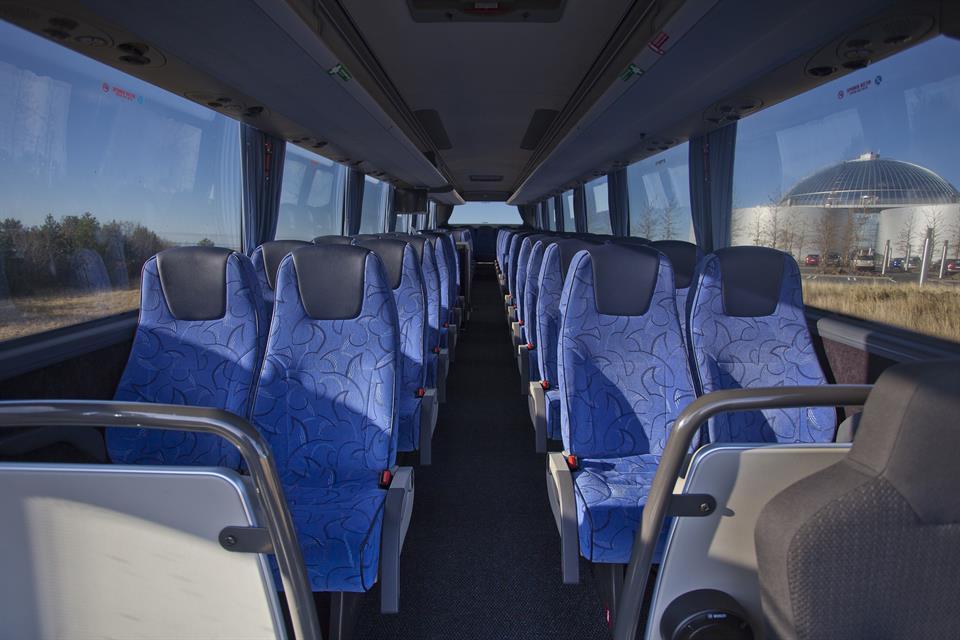
If you are bold and want to avoid paying anything, you can hitchhike. Iceland is a very hitchhiker friendly place. However, you run of the risk of not being picked up and of being caught out in terrible weather.
On a side note, according to Google Maps, walking to downtown Reykjavík from the airport would take you almost 19 hours, just in case you were wondering. Also, there are no sidewalks on that road and walking on the moss could damage it forever.
Many people rent a car, which is not a cheap option, but it gives you the flexibility to see Iceland at your own pace. One obstacle is that you will have to find parking downtown when you arrive. Certain times of day in specific areas are better than others for parking spots.
I have seen many people cycle along the side of the road. If you are that type person, go for it, but please be careful. Please wear reflective gear and have your waterproof clothing easily accessible
Getting Around & Distances to Places
Reykjavík is a very walkable city and you do not need a car to get from one place to the next. When you want to go outside of the city, you can rent a car or take a bus. The bus can be with a guided tour or a bus run by a private operator like, Reykjavík Excursions.
Also, there are plenty of city bus stops in Reykjavík and the Reykjavík area, which are the surrounding neighborhoods. You can use the strætó app to pay for rides on your phone. One way is 450 ISK. The bus drivers will accept cash but it must be exact change and in Icelandic money.
As mentioned earlier, you can take a tour to places or buy a ticket for the buses that go out of town.
There is a domestic airport that has flights to different regions of the country.
Additionally, there are boats, such as ferries, but it is less common for many tourists to take a boat, unless they are on a tour.
By car
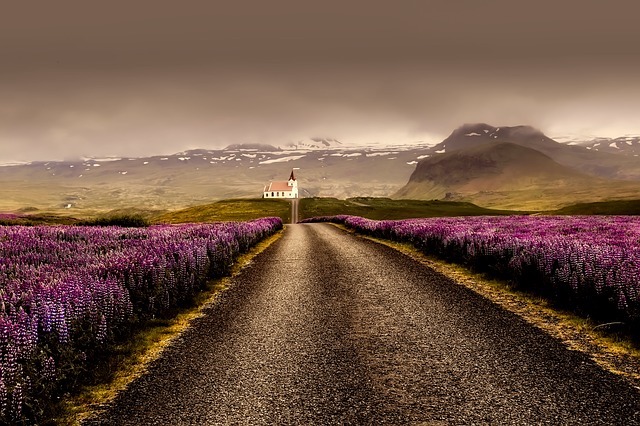
Below, I have listed the driving distances one way to popular places and the time it takes to get there, which will come in handy if you plan to drive. All of these distances are according to Google Maps and the starting point is from Reykjavík. During the winter, you should allow for more time if the road conditions are not the best.
For instance:
- Blue Lagoon is very close to Keflavík airport but from Reykjavík, you will have to drive 49 KM and that will take about 45 minutes
- Þingvellir, part of the Golden Circle, is 47.4 km, which is 46 minutes of driving
- Vík, the popular small town in the south of Iceland is 187 km from downtown and will take 2 and a half hours to reach by car
- Skaftafell, part of Vatnajökull National Park is 326 KM and will take a little over 4 hours to reach
- Sólheimajökull glacier – 165 km, which takes 2 hours and 8 minutes by car
- Jökusárlon & Diamond Beach – 380 km is approximately 4 hours and 47 minutes of driving
- Gullfoss – is 116 km and takes about 1 hour and 18 minutes
- Geysir – approximately 106 km away and is 1 hour and 30 minutes in a car
- Skógafoss – 156 km; 2 hours & 2 minutes of driving
- Seljalandfoss – 128 km; 1 hour & 40 minutes
- Hveragerði – 46.6 km; 40 minutes by car
- Reynisfjara black sand beach – 188 km; 2 hours & 25 minutes
- Selfoss – 58.7 km; 49 minutes
- Þórsmörk – 158 km; 2 hours & 38 minutes (river crossing necessary)
- Kerið crater – 68.8 km; 54 minutes
- Góðafoss – 116 km; 1 hour & 37 minutes
- Snæfellsnes Peninsula – 157 km; 2 hours & 6 minutes
- Mývatn – 482 km; 5 hours & 51 minutes
- West Fjords – 454 km; 5 hours & 36 minutes
The Rules of the Road in Iceland
If you plan to drive in Iceland, it is worth it to learn some of the rules of the road. There are little to no traffic lights once you get out of the city, but there are a lot of roundabouts.
Roundabouts
- This might seem strange to some people but in a two lane roundabout the inner circle has the right of way. So, if a person in the inner circle wants to leave, they put on their signal and the person next to them in the outer circle must stop to let them out.
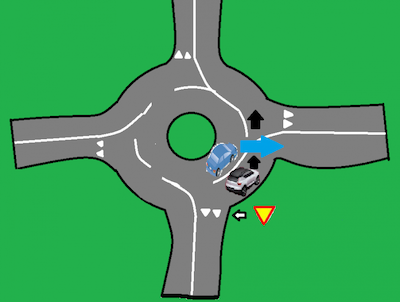
- Any car in the roundabout has priority over cars that want to enter the roundabout
Strict Rules
- When you get out of town, there are long stretches of road here, which make it very easy to speed. Try to not let your foot get too heavy on the pedal.
- Please do not drive off the road, it can damage the vegetation and is forbidden in Iceland.
- Talking on your phone or texting while driving can get you a huge fine. More enforcement regarding this has been implemented more strongly as of recently here, so use hands free devices.
Things to Keep in Mind
- The ring road, also known as route 1, goes all around the country, It is very easy to follow. There are, of course, other roads you can take to explore fascinating places, such as the Westfjords, Snæfellsnes Peninsula, East Iceland and so on.
- Always check the weather forecast before heading out. If it is recommended that you don’t drive, follow that suggestion because the conditions can get extremely dangerous very quickly. The rescue teams in Iceland are volunteers. You would potentially be risking other people’s lives who work for free if you get stuck because you didn’t listen to the recommendations to stay off the road.
- You can find automatic and manual cars to rent, but manuals can sometimes be cheaper because they are more readily available
F Roads & Crossing Rivers
- F roads in Iceland, literally have an F in front of the number on the map for that road. They are for 4×4 vehicles and are very rough because they are gravel. Even in the summer, these roads can cause issues, especially if there is a storm. If you do plan to drive on one, make sure to check the weather and if the road is even open. It is also advised that people travel together in two or more cars on these roads, if possible.
- Crossing a river in a car can be extremely dangerous if you don’t know how and if you do not have a car that is equipped for it.
Money in Iceland – Cash vs Cards

Most, if not all, places in Iceland will accept cash, if it is in Icelandic Krona. You can exchange money at the airport or get ISK from an ATM. However, credit and debit cards are the preferred payment methods. It is fast, easy and you don’t have to worry about carry around too much paper. I recommend using a credit card because you can more easily dispute charges that you don’t recognize. I don’t think it is common for unwanted charges to show up. However, it is better to be safe than sorry.
The krona fluctuates wildly. As I am typing this, 1 USD is about 122 ISK. While that is a favorable exchange rate for people with the dollar, things will still be expensive.
Communicating in Iceland
I dedicated the next episode to useful Icelandic words and phrase for visitors to Iceland. I recommend checking that out next week. As mentioned in that episode, English is widely spoken in Iceland, so it won’t be a problem if you don’t understand or speak Icelandic. However, Icelandic people seem to enjoy it when people try to speak to them in their native tongue. I encourage you to give it a try and so how it goes.
The Cost of Things, Sticker Shock & Tipping
Iceland is by no means a cheap place to visit. Food, alcohol, gas, clothing and pretty much everything, except for water from a natural source or tap and electricity, are very expensive. Check out this website that gives you an idea of how much things cost here.
It is not necessary or expected that you will tip in Iceland. However, if you enjoyed the service that you received, you can certainly leave a tip.
The alcohol stores in Iceland are government run. As I mentioned, alcohol is heavily taxed here. One way to save a little bit, if you plan to drink, is to buy your alcohol in the duty free area in Keflavík airport. If you want to save a bit while drinking out at bars, you can use the app called Appy Hour to see what happy hour specials are happening downtown.

If you will have a kitchen available to you during your trip, you can save money by buying food in the grocery store and cooking on your own. However, I do suggest going out to eat some things, specifically, the top 10 Icelandic foods to try that I listed in last week’s episode.
When Should You Visit Iceland?
Honestly, every time of the year in Iceland is wonderful. Summer has long, bright days, winter is perfect for seeing the Northern Lights, during Fall the changing colors are magnificent and Spring, while interesting, is not your typical idea of spring in most places. The return of more sun is spring for Iceland. It is still chilly, icy and will probably snow quite a bit, but the long days are returning and that is what gets everyone excited. When you should come just depends on what you want to do.
If long hikes in the highlands appeals to you and to be able to have daylight at any time of the day, then summer is your best bet. If you are keen on seeing the alluring Northern Lights, a snowy wonderland and getting that cozy feeling that many Icelandic houses have, then you should consider coming in the winter. It is worth noting that you can avoid a lot of crowds if you come during the shoulder season months, like September, October, November, March, April & May. The amount of tourists in Iceland skyrockets in the summer and for the New Years celebrations, which are amazing.
No matter when you come, there are certain things that stay constant – you can bathe in natural hot springs or hot tubs in the very nice public pools; Icelandic people love to party, so if you want to do that in downtown Reykjavík just know that most people are not out until midnight. The ice cream shops are open all year long. Some of them are open until 11pm on certain days. It is worth trying while you are here. You can always find delicious food. If you have the right clothing and an open mind, you won’t regret your choice to visit. It wouldn’t surprise me one bit if you end up falling in love with this country like I did.
Accommodations in Iceland
Next up to consider when preparing for your trip, is your accommodations. There are many different types of accommodations in Iceland and the range can go from being affordable to ridiculously expensive. Hotels, on average, are around $200 or more a night, Airbnb’s are a cheaper option but you need to book far in advance or you risk missing out on reasonable prices. Also, there has been some push back against Airbnb’s as of late, so I am not sure how long they will continue to be an inexpensive option.
Hostels are for sure much cheaper than a hotel and I would just shop around if you are interested in that option. Camping can be quite nice in the summer and is for sure not very expensive. A well anchored and sturdy tent is necessary because the wind can easily blow your tent over or away. There are many campgrounds with facilities in Iceland.
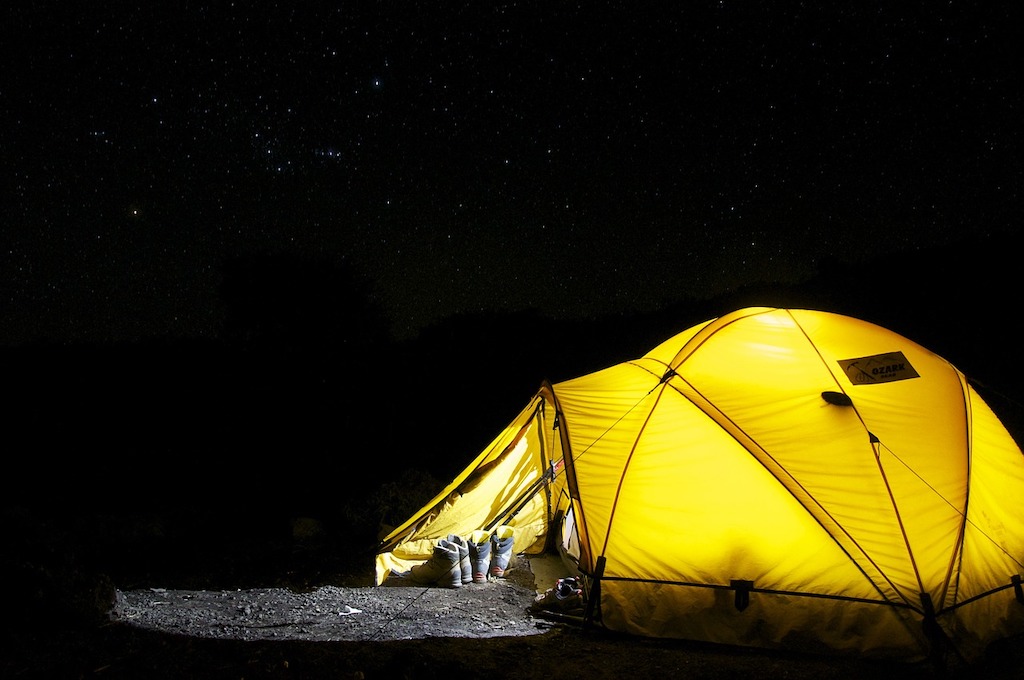
Summer houses or cottages out in the countryside can be rented in summer or winter. I don’t know why Icelandic people call them summer houses when they are used all year long, but such is life.
Guesthouses can also be an option that you can book at a reasonable price.
If you are going to the highlands of Iceland, you can book a space in a mountain hut. These are very basic accommodations but they are quite nice after a long hike or drive to get there.
Electricity & Internet/Wifi
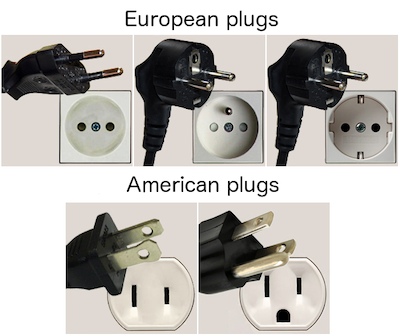
Internet and wifi are readily available downtown in hotels, cafes, restaurants and so on. However, many remote places might not have wifi, so be aware of that. Downloading directions from Google Maps or having a GPS that doesn’t require internet can be helpful if you plan to travel around the country. The good news is that there is only one road that goes around the whole country, so it is not terribly hard to get back on track if you get lost.
If you are coming from a part of the world that does not use the standard European plug, like the US, UK, Asia and so on, you will need to have a converter to charge your gadgets. Also, European appliances run on 220 volts, so that is something to keep in mind if you have a hair dryer or flat iron that runs on different volts, such as 120 in the US.
Is Iceland Safe?
Iceland has been named the most peaceful country for many years in a row. It is a very safe place. However, crime, like theft, can happen anywhere in the world. Just make sure to keep an eye on your belongings, especially downtown where it is more crowded.
This country is also a very kid friendly place, so bring along the kiddos if you want. There are lots of playgrounds and interesting things for them to explore.
As I mentioned earlier, it is also very hitchhiker friendly. If you are on a super strict budget and your travel plans are quite flexible, you use this as an option. I suggest only doing it in summer because more people are traveling on the roads and you have sunlight all day, which makes it easier to get picked up.
How Long Should You Visit Iceland?
The length of your stay is entirely up to your budget and ability to be away. If you are able to stay for a week, you can see a lot of awesome sights. However, I know that everyone’s schedule is different, so choose what works for you now. If you enjoy your stay, hopefully you can come back for a little while longer to see more of this amazing place.
Now that you have been armed with some tips on how to prepare for your trip to Iceland, I am going to move on to the next portion of the show, which is the random fact of the episode.
Random Fact About Iceland
60% of the Icelandic population lives in Reykjavík. With a 2018 population estimate of over 350,000 people living in Iceland, the capital area is densely packed with people in comparison to other parts of the country.
Icelandic Word of the Day
Að undirbúa – to prepare
Let’s be social! Here is where you can connect with me on social media platforms:
I hope you enjoyed this episode that is chock full of information about preparing for your trip to Iceland. I release a new podcast episode every week. Make sure you are subscribed to the All Things Iceland podcast so you don’t miss new episodes. If the platform you are listening to this podcast on allows you to leave a review, please do so, if you haven’t already.
Þakka þér kærlega fyrir að hlusta (og að lesa) og sjáumst fljótlega
Thank you kindly for listening (and reading) and see you soon!
Greetings from Idaho! I’m bored to tears at work so I decided to check out your website on my iphone during lunch break. I really like the knowledge you present here and can’t wait to take a look when I get home. I’m shocked at how quick your blog loaded on my cell phone .. I’m not even using WIFI, just 3G .. Anyhow, very good blog!
Hi! Glad to hear that the site loads quickly for you. Thanks for checking it out.
Hello! Thank you for writing such in depth blog about how to prepare for a trip to Iceland.. My sister and I are interested in coming to Iceland for a two week trip in December. We were going back and forth between renting a camper van so we could drive around the country or either just staying in the capital city and renting a car when needed. I was wondering if you have a blog or podcast on things to things to do in the city. Thanks!!!
Hello and thanks for the message. I recommend traveling around the country. However, it is very important to pay attention to the weather reports because the winters here can bring dangerous storms and icy roads. Safetravel.is is a great resource to find out if any roads are closed. I am working on a video about things to do in Reykjavík. I hope to have that out soon. 🙂